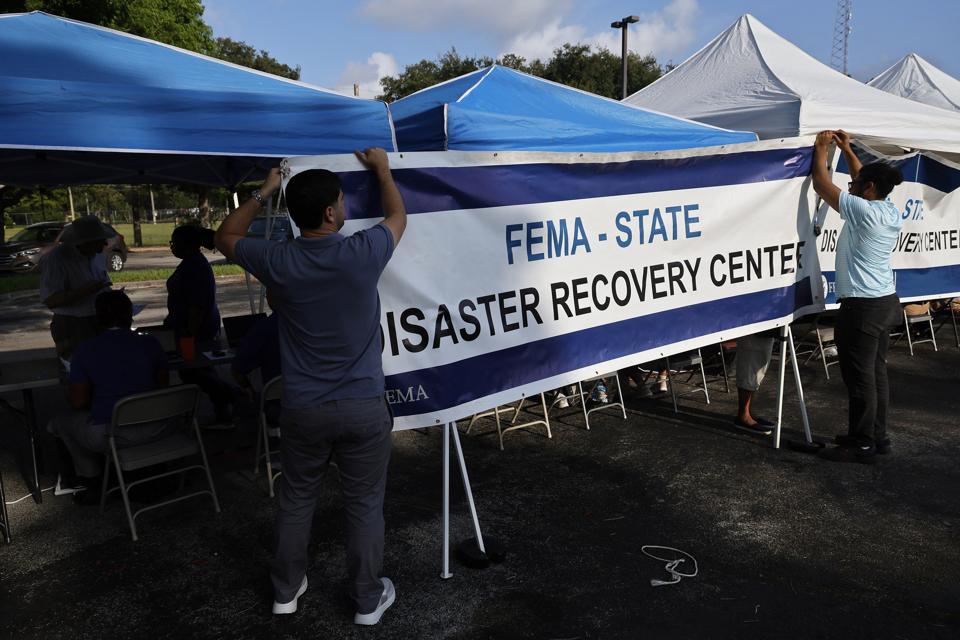The more business leaders can learn from the experience of others who have responded to a crisis, the better prepared they will be when a crisis strikes their organizations.
The Federal Emergency Management Agency has a breadth and depth of experience from which corporate executives can profit. Since it was founded 45 years ago this month, FEMA says it has responded to 1,000 severe storms, 478 floods, 227 hurricanes, 71 snow storms, 26 earthquakes, five volcanic eruptions, and hundreds of other catastrophes.
Here’s what CEOs and their staff can learn from FEMA’s response to more than 2,100 disasters.
Adapt
Companies should pay attention to the evolving nature of threats, and prepare and respond accordingly.
“The role of FEMA and emergency managers across the country has drastically changed over the last 45 years,” an agency spokesperson said via email.
“While our mission of helping people before, during, and after disasters has remained consistent, the scope of our work has expanded to encompass response to natural hazards, preparations for terrorist activity, to recovery from world-wide pandemics, and more. As our threat landscape has evolved, so did our agency—and we will continue to find new ways to build the resilient nation Americans need and deserve.”
Follow A Set Of Guiding Principles
Companies and organizations should know ahead of time how they would respond to a variety of crisis scenarios.
FEMA “… tends to issue guiding principles and as few regulations and rules as possible…then relies on experienced and empowered leaders to manage crisis situations within the established framework,” Clifford Oliver, a former assistant administrator at FEMA, said via email.
Work Well With Others
Depending on the nature of a crisis, it may be necessary to reach out to others in order to address the situation effectively, efficiently, and strategically.
“Effective emergency management is not something FEMA can do alone,” according to the FEMA spokesperson. “ It requires clear communication with our partners before, during, and after disaster to ensure we’re bringing the right assets, expertise, and messaging to communities.”
Think Ahead
“Leaders should consider the steps they can take to protect their employees, operations, and communities in case of an emergency,” FEMA’s spokesperson advised.
“They should prioritize pre-crisis planning such as strengthening cyber security measures, obtaining adequate insurance coverage, and understanding their unique risks. This is an all-hands-on-deck moment, one that requires cross-sector collaboration to prepare our communities for future risks before they happen,” they counseled.
Reduce Risks
In 2021, FEMA announced the full application launch of the National Risk Index, The free resource “provides a clear, visual guide to natural hazard risks throughout the United States, and information to help communities to understand and reduce those risks, whether they involve flooding, wildfire, extreme heat, or drought,” according to the agency’s website.
The online mapping application identifies communities most at risk to 18 natural hazards, including coastal flooding, cold waves, hurricanes, ice storms and wildfires. The application visualizes natural hazard risk metrics and includes data about expected annual losses from natural hazards, social vulnerability and community resilience.
“Undertaking hazard mitigation measures, defined as a sustained action taken to reduce or eliminate the long-term risk before a crisis, reduces impacts and the corresponding need to prepare and respond,” Oliver, the former FEMA assistant director, pointed out.
“Implementing an on-going hazard mitigation program before, during, and after crisis, serves to break the damage, repair, damage cycle,” he commented.
Learn From Experience
“FEMA has learned that disaster response should be managed at the lowest level possible,” according to Oliver.
“This is accomplished when they actively engage their community partners at the federal, state, local, tribal, and territorial levels to effectively communicate an impacted community’s needs and identify resources to rapidly fill those gaps,” he observed.
After Hurricane Katrina, Oliver recalled in 2o21 that the agency reviewed and revised its national response plan and turned it into a national response framework. “That framework now serves as the comprehensive guide on how the U.S. responds to all types of disasters and emergencies.”

